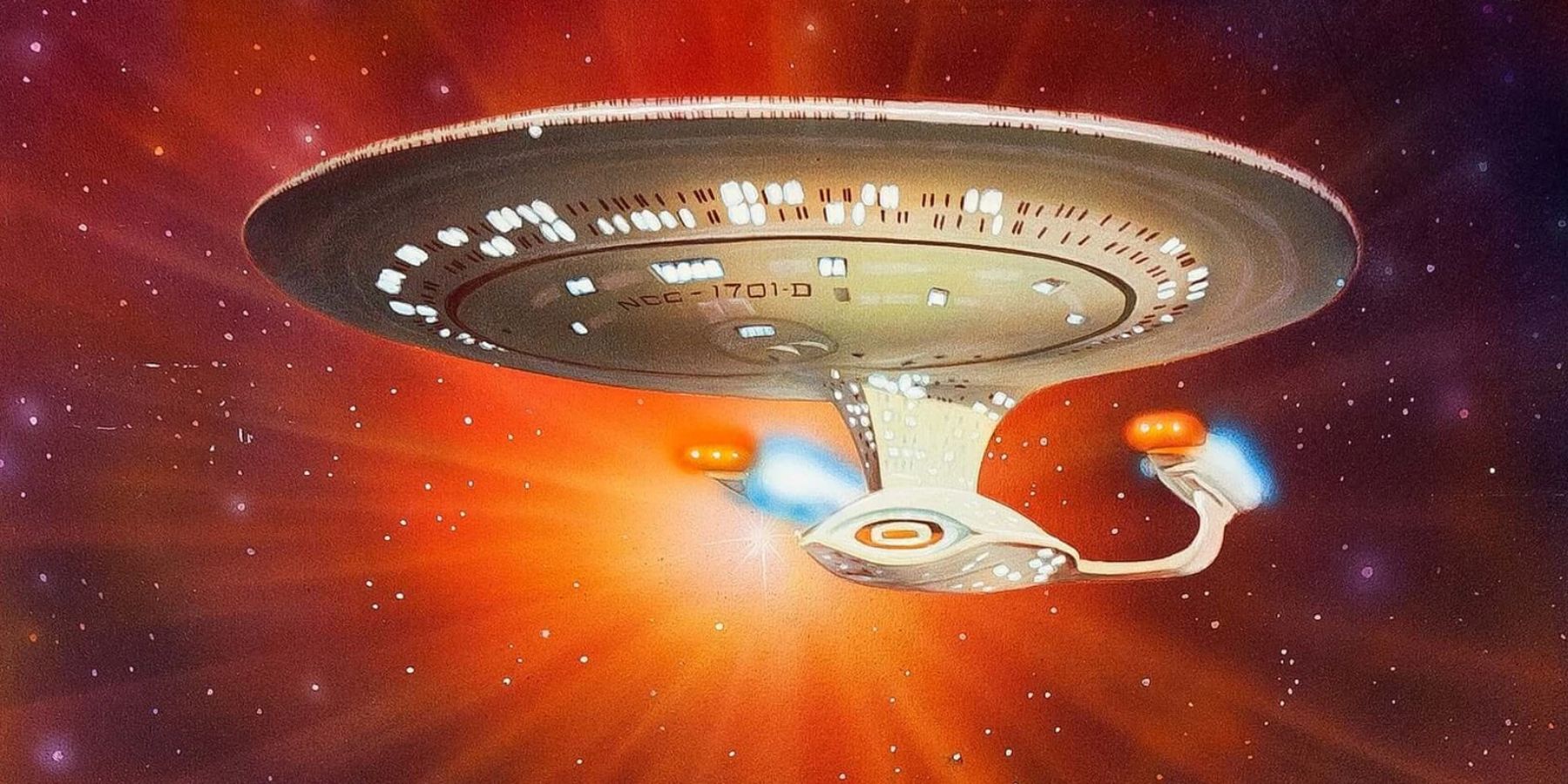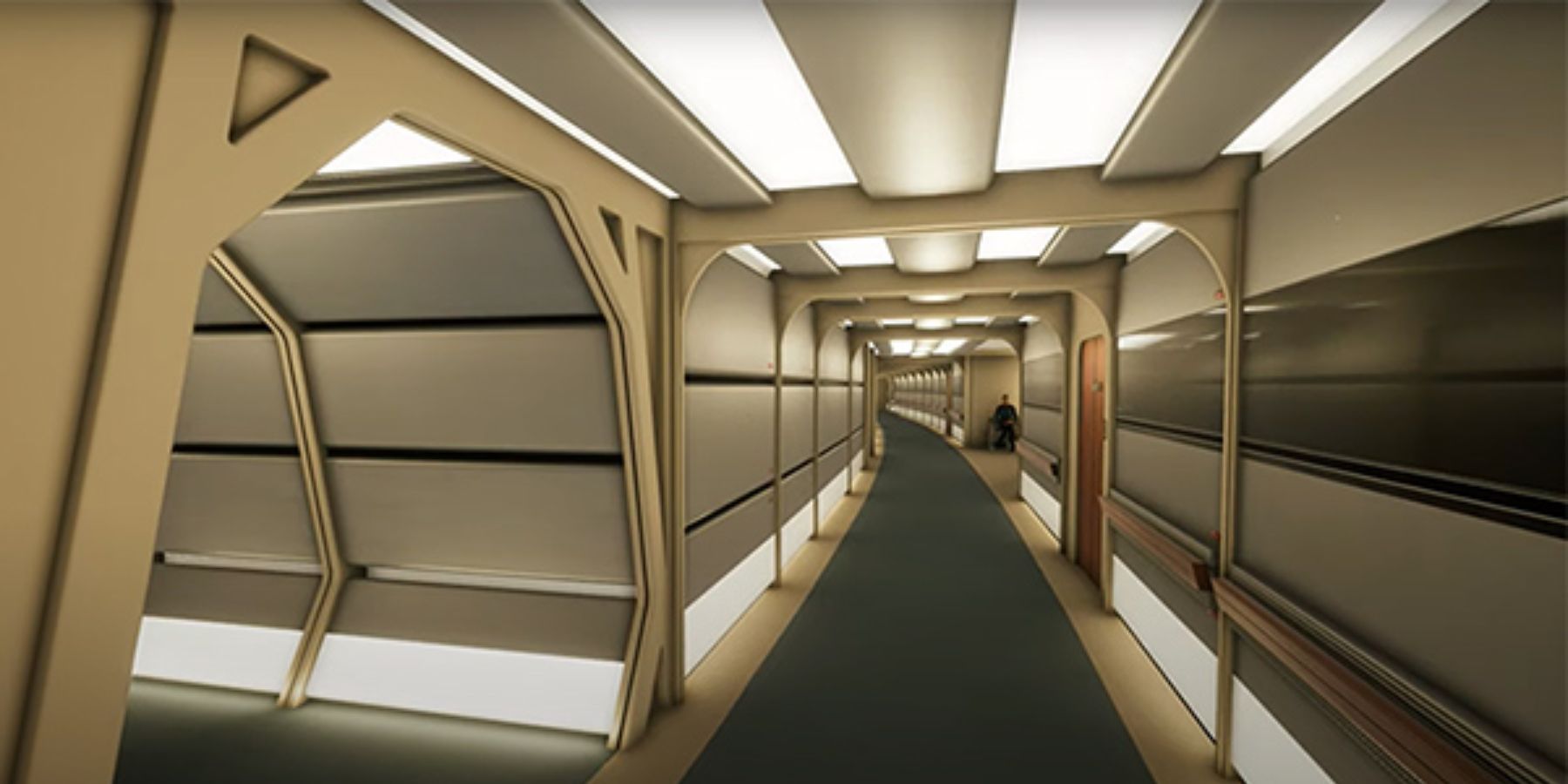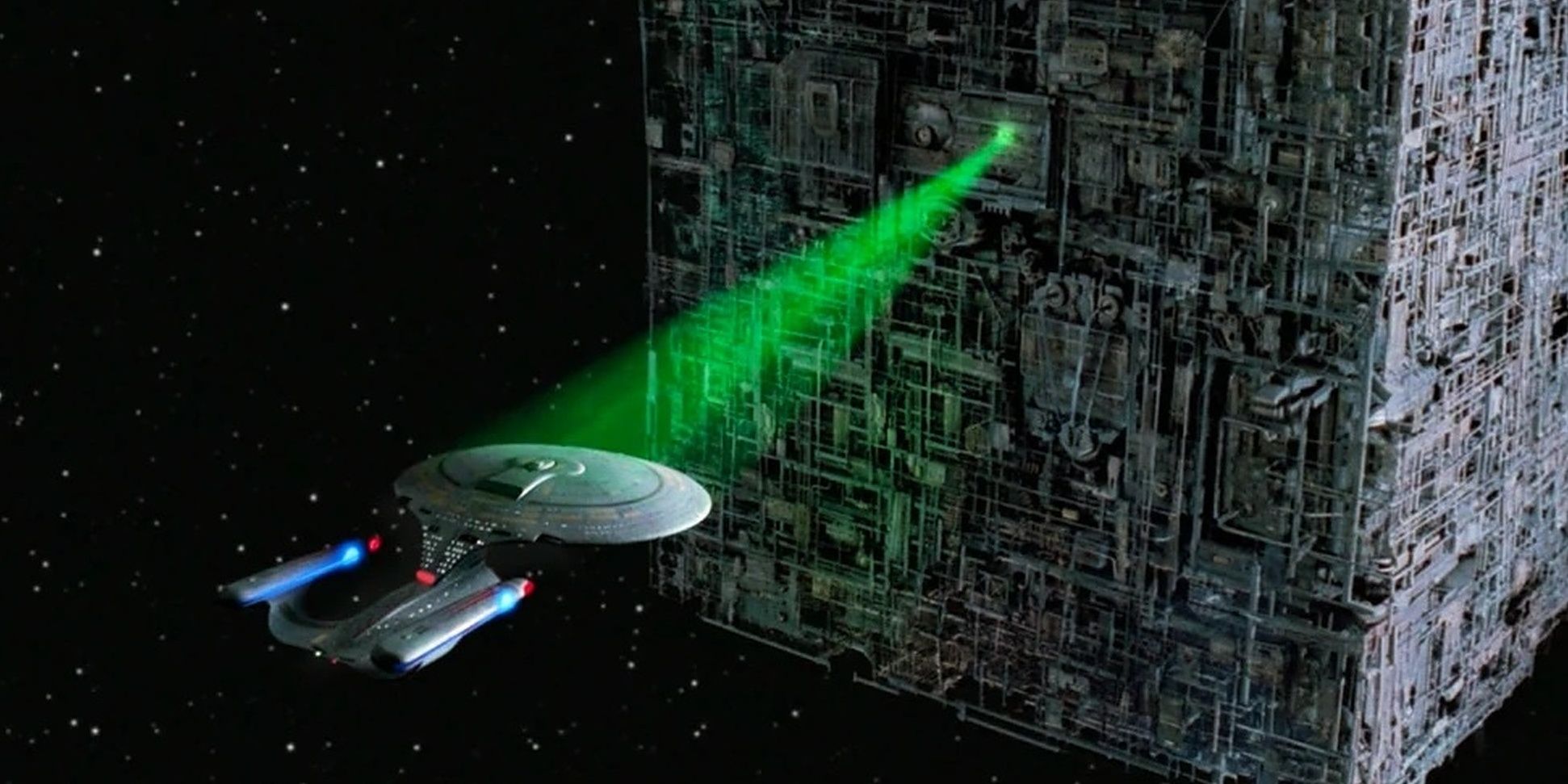Of all the wild and wonderful things to come out of the Star Trek franchise, one of the most iconic and most recognizable are the various spaceships. Whether it is an Enterprise or not, these vessels are arguably the most important bit of technology in the shows and movies. They allow for each and every episode to take place, as well as being a home for the show's main array of crew. They make it possible to boldly go where no one has gone before.
Of all of these ships, the Enterprise-D is perhaps one of the most memorable, captained by none other than Patrick Stewart's Jean-Luc Picard in The Next Generation. But despite its hype and iconography, there are a fair amount of problems with its overall design.
The first issue is not necessarily specific to the Enterprise-D. Rather, it's an issue that seems to plague many of the ships post Original Series. The issue is that of scale, and how Starfleet seems to be obsessed with making ridiculously unnecessary large ships, far bigger than is needed even for a large crew like that of the Enterprise-D. Picard’s ship measures up to approximately 642m in length, almost double the height of the Eiffel Tower (which measures 324m high). Not only is it long, but it is wide and deep. The ship has an estimated 9 million square feet of habitable living space, a whopping amount of room that would be nigh impossible to fill.
This would not be too much of an issue if the Enterprise and ships the same size carried more people. But the reality is that the Enterprise-D houses around 1000 people (a number that fluctuates through the show, but it’s normally around this number or smaller). This works out as over 8,900 square feet of living space for each person, making it a surprise that anyone walking around would ever randomly bump into another person. It should be a vastly empty ghost ship.
The size of the ship is the first issue with the overall design, but at least it can be explained somewhat within canon. These galaxy class ships were designed more like luxury cruise ships than military vessels, thus practicality was deemed less important than comfort. They were built to last a long time, with lots of empty space that would allow for near infinite expansion depending on the needs of the crew. To this point, it’s noted that the entire 8th deck is left purposefully unfinished. It was designed to be multipurpose in case there was any specific, random need for space during a long mission. The TNG technical manual states that in fact, 35% of the ship was actually left empty. This was done with the expectation that they will be filled with things unimaginable at the time of creation, such as additional refugee quarters or even Borg charging stations.
The next biggest issue fans had with the design was that it looked fairly disproportional. A lot of viewers thought (and think to this day) that the saucer section is too big in comparison to the rest of the ship, making it look top-heavy. Of course, the laws of gravity don’t affect the ship in the same way as it would on Earth, and thus the ship would never topple over. Yet, still looked like at any moment it could fall forward under its own awkward weight. It was chunky and squat, with the warp nacelles being too low and the neck looking award from most angles. These were all problems that the later Enterprise-E design solved. It stretched things out, proportioned things properly, and made everything look not only more graceful and futuristic, but perfectly weighted.
The next design issue for the Enterprise-D comes outside the fictional universe, and once again comes down to budget restraints for the show. The ship overall, despite criticisms about certain aspects of the design, was not terrible. However, it often looked worse when it appeared from certain angles. The majority of times the ship is shown, it is pictured from below, with the camera pointed upward. It made the ship look far more wide and top-heavy. These shots were done out of a desire to make it look huge, as the camera facing up at it giving it a gigantic sense of scale. However, it was also far easier to get shots of the ship from the angle. The model for the Enterprise-D was mounted upside down from the top of the saucer, the most stable way of fixing it in place. For shots of the top, the show's crew would have to mount it awkwardly either with wires or complicated nacelle clamps. This was much harder and thus far more costly to do, and so they settled with more shots from below.
While the Enterprise-D is one of the more iconic ships, it is an unfortunate product of the time it was created. Star Trek was trying to go big, showing the utopian Federation at the height of their power. As such, they created vastly impractical and enormous ships that prioritized luxury over practicality. Ironically, the show makers themselves did not have the same budget Starfleet had (even more ironic when considering Starfleet had no money). Thus, they were left with a ship that looked good from an angle that was usually too expensive for them to use. While the ship itself is not badly designed, its design did not necessarily work.



